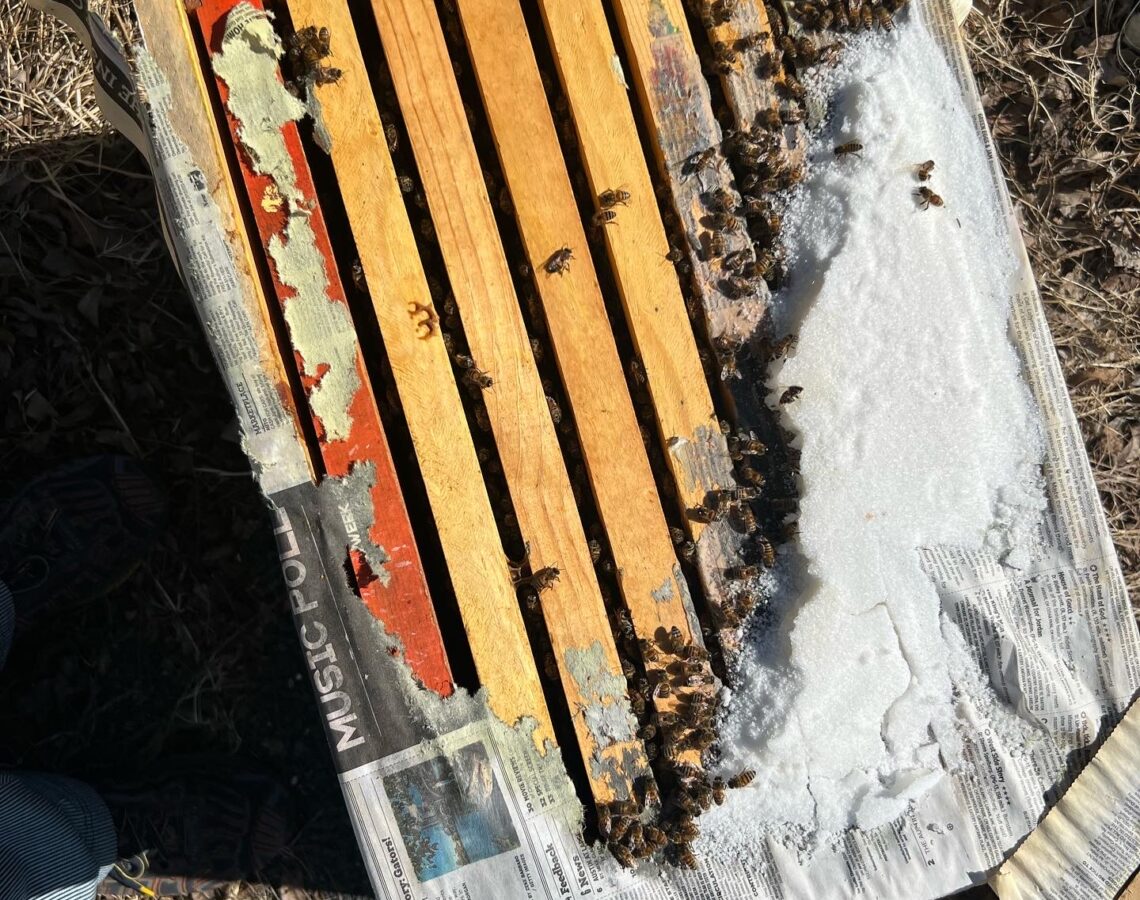How to Feed Bees During Winter

Last month we talked about what steps to take to best prepare your hives for winter, and I promised that this month I would demonstrate how we emergency feed during winter. If your hives do not have enough stores to make it through the winter, finding ways to provide emergency feeding is a must. It’s worth noting that if I assess a hive has enough stores to make it through February, I do not feed that colony.
Our normal method for feeding bees carbohydrates through sugar syrup is not usually an option for winter feeding. Honeybees in cluster cannot access the sugar water (plus, can you imagine how cold the sugar water would be, even if they could?!) Rather you need to provide a feeding option that allows the bees to access the feed while in cluster. Additionally, feeding bees a bunch of sugar water during cooler months isn’t a great idea because if they store that sugar water in the comb, this can create a bunch of extra condensation that can drip down onto your bees. The last thing you want is your cluster to be wet as they struggle to keep warm! The best analogy here is to think about a really warm car on a really cold day: condensation will form on the inside of the windows. Same thing can happen inside of a bee hive.
So how do you provide emergency feed during winter? There are a handful of options, including making sugar bricks and cakes (you can buy these pre made or google for recipes!), but my preferred method is what’s called mountain camp feeding. Mountain camp feeding involves feeding bees dry sugar over the top of the frames in a hive.
The method is simple: place a single sheet of newspaper over the top of your frames, pour a thin layer of plain, white table sugar on the newspaper, and place your inner cover and telescoping cover over the sugar. There are slight variations to this method:
- Some like to take a water bottle and spray a light spritz of water on the sugar to keep it in place and keep it from sliding around.
- Some like to use a shim over the sugar, but under the inner cover, to make some extra space in the hive to allow for more sugar. As long as my inner cover is recessed, I find I have plenty of space for 1-2 cups of sugar to fit between the top of the frames and the inner cover.
One benefit of this style of feeding are that it’s very easy and quick to do in the apiary with no prep time. I can make a gametime decision in the yard and if I find I have to unexpectedly emergency feed a colony, I have all the materials to do so. Feeding dry sugar has a second benefit: sugar is hygroscopic, which means it draws moisture from the air. This means that if you do have any extra condensation from late season feeding, the sugar will absorb the moisture, helping to protect your cluster from moisture. Finally, feeding of dry sugar over the brood nest means the cluster can move en masse so as to access the feed without breaking the cluster. They will move up, chew through the newspaper, and have access to the carbohydrates.
Here in Texas we typically have a fair number of warm enough days that allows me to check on hives that have been mountain camp fed once per month, or so. I’ll visit the apiary on a warm day a month after feeding, and assess how much sugar the bees have consumed, and replace as necessary. I will keep feeding dry sugar through February, until daytime temperatures are regularly in the 50s or above.
Check out the below video to see a quick recap of how to mountain camp feed your bees.
Interested in learning more? Check out our next Beek Apprenticeship class!



Leave a Reply